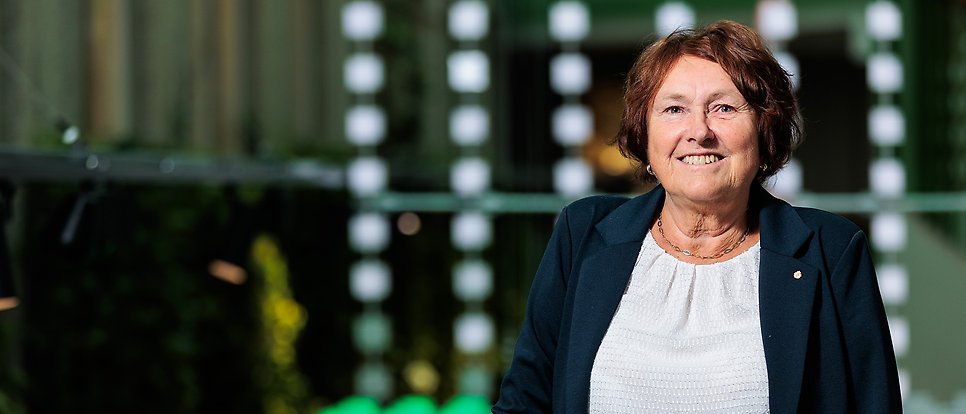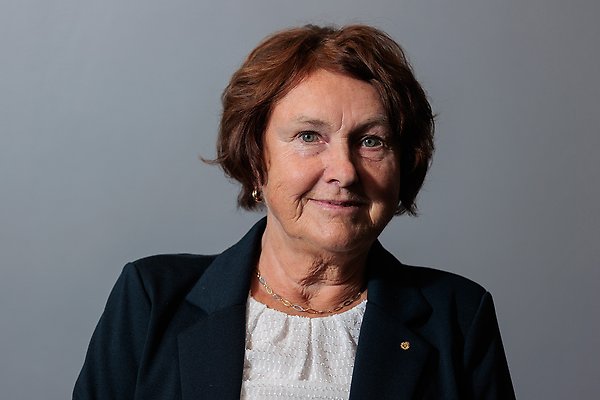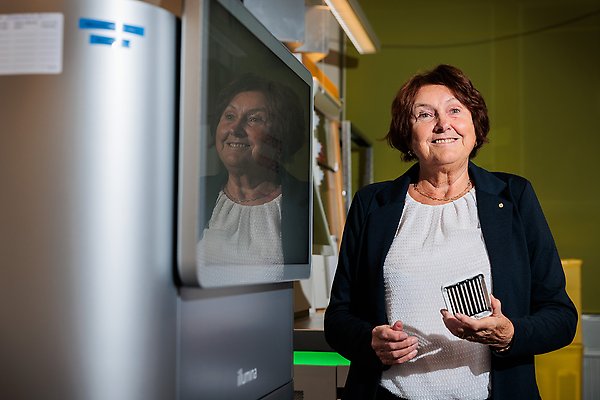Ann-Christine Syvänen brought genomics into the clinic
Researcher profile

Ann-Christine Syvänen established a technology platform for the analysis of genetic variation at Uppsala University Hospital. Photo: Tobias Sterner
Ann-Christine Syvänen established a technology platform at Uppsala University to map the genetics behind various diseases. The goal was to develop new diagnostic tools and introduce genomics into clinical research and care. Now she is being honoured with the Olof Rudbeck Prize for her achievements.
Ann-Christine Syvänen grew up in Finland. Her research career began at the University of Helsinki and continued at a pharmaceutical company and the Finnish Public Health Institute.
She came to Uppsala University in 1998, and three years later she established a technology platform for the analysis of genetic variation at Uppsala University Hospital. The goal was to give clinical research teams access to the new genetic technology for mapping diseases.
In Finland, she had developed the so-called “mini-sequencing” , an accomplishment for which she was appointed coordinator for DNA analyses in the WCN Consortium, funded by the Wallenberg Foundation.
“Back in the early 2000s, the advantage of the mini-sequencing method for analysis of genetic variations (SNP analyses) was that it was accurate, fast and easy to use, compared to other methods for SNP analysis available at the time,” says Ann-Christine Syvänen.
Research on SLE and childhood leukaemia
In addition to working with the technology platform, Ann-Christine led her own research team in Molecular Medicine. The group worked to map the genetic risk behind the autoimmune disease SLE. With the new method, they were able to simultaneously map about 40 genetic risk variations in SLE patients.
“We found the first two genes that carried several mutations resulting in a high risk of SLE at an early stage, back in the early 2000s. Since then, hundreds of disease genes that entail a risk of the disease have been indetified.”

In addition to working with the technology platform, Ann-Christine led her own research team in Molecular Medicine. Photo: Tobias Sterner
Another research track was to identify mutations in paediatric patients with ALL (acute lymphoblastic leukaemia), to help understand which form of leukaemia they had.
“We also performed epigenetic analyses, a new methodology that increased the precision of the patients’ subtypes. In total, my team had 19 doctoral students during 20 years conducting research on SLE or ALL. So there was an average of one doctoral thesis per year in the group.”
Remained at Uppsala University Hospital
The reason why these particular diseases came to be studied was that there were clinical research teams interested in the genetics behind them. For 16 years, the research team remained based at Uppsala University Hospital.
“Our lab was in the hospital’s Research Department on the third floor at Entrance 70. It was a central location in the hospital, and that encouraged cooperation with the clinicians. It was also easy to meet them in the hospital’s canteen.”
But the equipment for SNP analysis and DNA sequencing became increasingly advanced and needed more space. When SciLifeLab established its new premises at BMC (Uppsala Biomedical Centre) in 2013, Ann-Christine, the technology platform and the research team moved there.
Many international students
Today, the SNP & SEQ Technology Platform is one of the largest units within SciLifeLab, with over thirty employees working with the technology. Through the platform, a large number of research projects from both Swedish and international research teams have been conducted over the years, giving Ann-Christine Syvänen the opportunity to participate in many major international studies on various diseases.
"About every three years, we needed to buy new, more modern equipment. Technological development in the field of genomics has gone incredibly fast. Today, the platform has huge machines that can analyse a person’s entire sequence of dozens of genomes within a day.”

Technological development in the field of genomics has gone incredibly fast. Ann-Christine Syvänen beside one of the huge machines. Photo: Tobias Sterner
Ann-Christine Syvänen herself has a background in biochemistry. Work in the field has come to focus increasingly on large-scale genomics and on bioinformatic analyses of large amounts of data.
“Nowadays, the most talented researchers in disease genomics are probably the ones who can both ask relevant clinical questions and know the methodology for analysing genomics data. That’s where the development is headed,” she says.
Semi-retired
Ann-Christine ceased her research activities in 2022, after five years as a post-retirement professor. Yet she remains professionally active, for example by helping to review applications for research grants. When we speak, she is at her holiday home in Hudiksvall, which she and her partner have had for the past ten years.
In the meantime, research continues in Uppsala. The SLE disease can now be treated with antibody drugs developed by major American pharmaceutical companies. And knowledge about childhood leukaemia has increased radically since it became possible to sequence the entire genome, opening the doors for new “precision” medicine.
“Sequence analyses are now being used in healthcare as well, paticularly for leukaemia and other cancers. In this respect, technological development has been of great importance. It’s very valuable that it’s possible to produce DNA-based cancer diagnostics using gene sequencing of whole genomes,” says Ann-Christine Syvänen.
Annica Hulth
Facts: Ann Christine Syvänen
Latest accomplishments: This year’s recipient of the Olof Rudbeck Prize, “for the development of diagnostic tools and for her pioneering contributions in clinical genomics”.
Career in brief: PhD in Biochemistry from the University of Helsinki (1986). Professor of Molecular Medicine at Uppsala University (2001). After 20 years as research team leader and head of the SNP & SEQ Technology Platform, followed by five years as a post-retirement professor, Ann-Christine retired in 2022. Member of the Royal Swedish Academy of Sciences (since 2007). Included in the 2018 Highly Cited Researchers List.
Leisure pursuits: I’ve always worked a lot, so my job was also my hobby. But I have a regular meditation practice, which I started around the time I moved to Uppsala.
Last book she read: I May Be Wrong by Björn Natthiko Lindblad. Currently reading Kerstin Ekman’s The Wolf Run. I always read a lot when I was young, so that’s one of the things I’ll do more of in my retirement.
Hidden talent: I spent my summers in Finland in the Helsinki Archipelago. My family was very interested in boats, and I was quite young when I got to start driving a motorboat by myself. Ann-Christine and her partner have had their own boat for the past decade.
Most cited articles: A review article on the new SNP genotyping technique from 2001 is very well cited and is still used in teaching. My first publication describing the "”mini-sequencing method” and the publication on the two SLE genes identified by my research team have also been widely cited.
